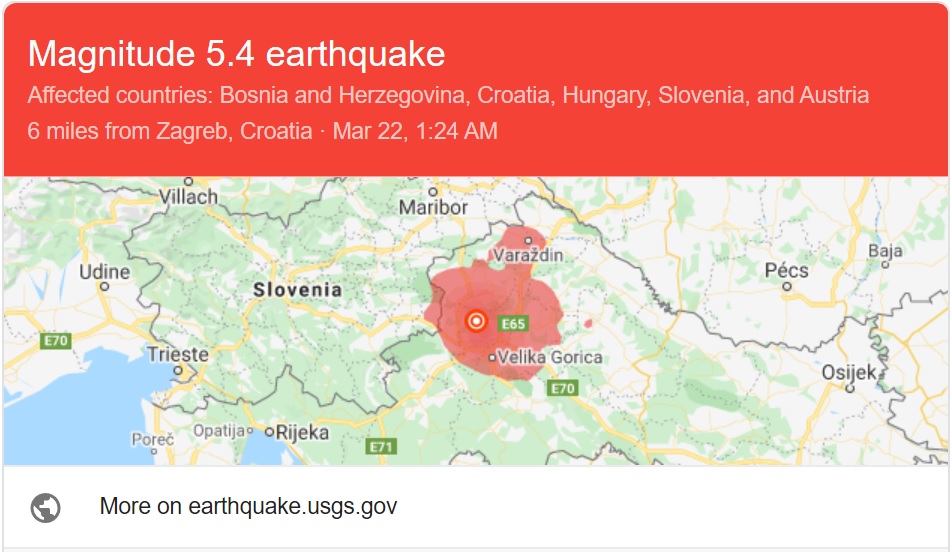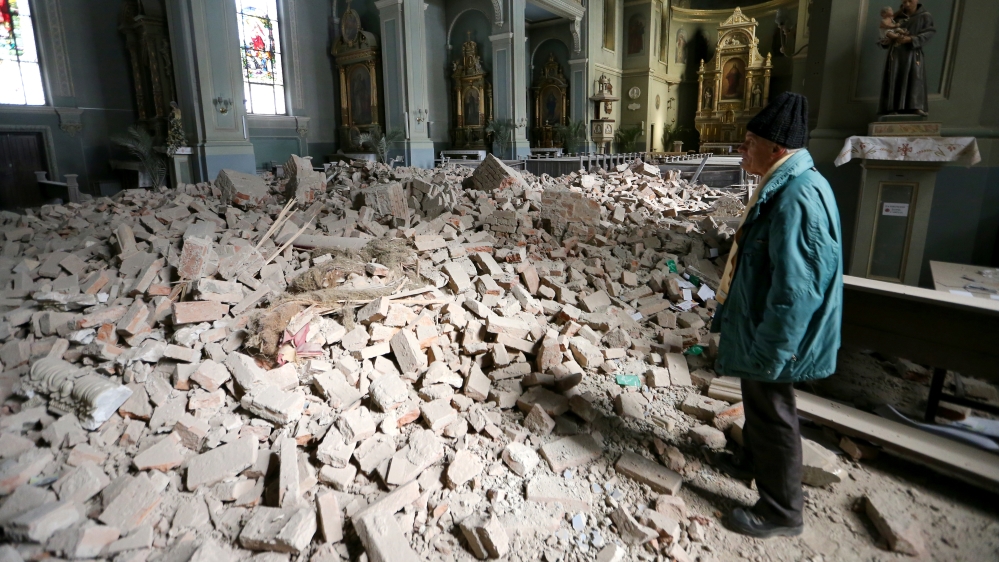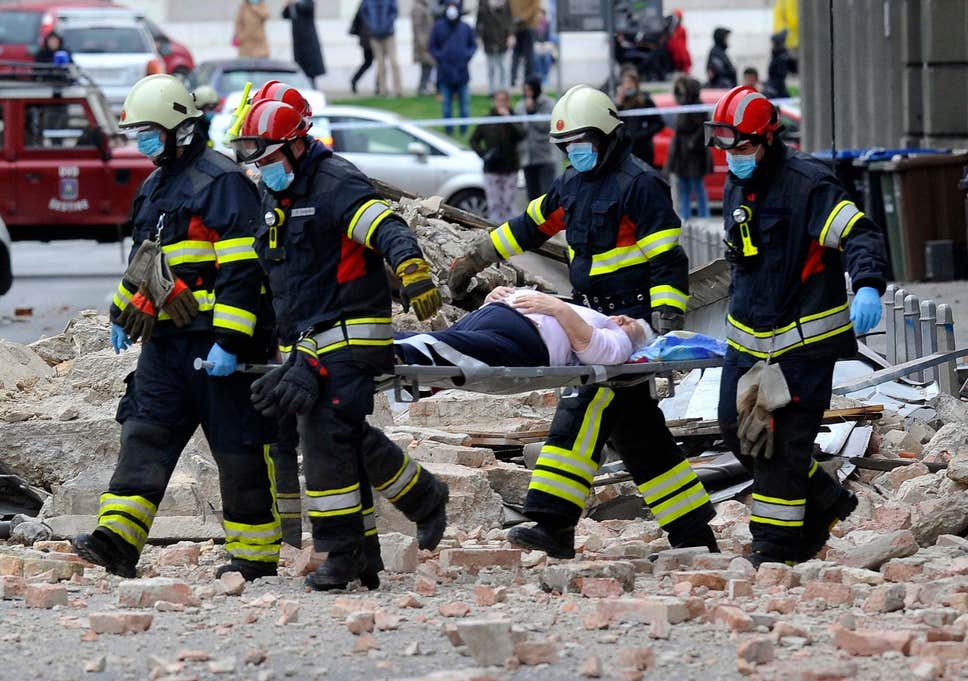Zagreb – Two strong tremors, with magnitudes between 5 and 5.5 degrees on the Richter scale, caused panic in Zagreb on Sunday, serious material damage and several injuries, all in the midst of citizen confinement imposed by the Croatian authorities against the coronavirus expansion.
The first earthquake, the strongest, lifted the inhabitants of the Croatian capital out of their beds at around 06:30 local time (05:30 GMT), followed by the second earthquake half an hour later.
In the following hours, several aftershocks were felt, although all were much milder.

Croatia, Bosnia, Hungary, Austria, Slovenia, and Herzegovina earthquake – VivoMix
Thousands of citizens panicked out onto the streets, including many patients from major hospitals caring for people with COVID-19 infections.
A maternity clinic decided to carry out the deliveries scheduled for this Saturday in open-air ambulances, while dozens of mothers with newborn babies took to the streets amid unusual low temperatures of just 4 degrees.
An as yet undetermined number of people were slightly injured when part of buildings and roofs collapsed, although a 15-year-old girl is in critical condition, authorities said.

Croatia church ruins due to 5.4 earthquake – VivoMix
Zagreb Cathedral, the tallest building in the city, suffered damage to its tower, the tip of which broke and impacted just in front of the home of Zagreb Cardinal and Archbishop Josip Bozanic.
Sources in the Zagreb bishopric told the press that what happened is a “sign from God.” In another nearby church, the interior ceiling collapsed, leaving the basilica full of rubble.
According to Croatian authorities, the epicenter of the tremor was 7 kilometers north of Zagreb, at a depth of only 10 kilometers, which would explain the heavy damage to numerous buildings in the city center.
The earthquake was strongly felt in neighboring Slovenia and southern Austria as well
The Croatian army was sent immediately after the earthquake to the most affected areas to remove the rubble, while statics specialists and architects reviewed the most affected buildings, including the Croatian Parliament, which suffered severe damage, which has led to the forbidden to enter inside.
Croatian Prime Minister and current incumbent President of the European Union (EU) Andrej Plenkovic said the earthquake “was the most serious in Croatia in the last 140 years.”
Due to the damage suffered, numerous power and water cuts occurred, as well as some fires, which could be controlled in a short time.
In the center of Zagreb numerous vehicles were destroyed by parts of buildings that fell to the streets.
Radio Croatia recommended that citizens not move around the city center in view of the danger of balconies and pieces of buildings that may be falling onto the streets.
The Interior Ministry, for its part, recommended that citizens leave their homes as a precaution against the danger of new and stronger aftershocks, however, always maintaining a social distance of at least one meter to avoid contagions with COVID- 19.
“Keep your distance. Don’t get together. We are facing two serious crises, the earthquake and the epidemic,” said Interior Minister Davor Bozinovic.
Croatian Minister of Public Health, Vili Beros, for his part, urged citizens to be cautious and especially comply with the rules of social distancing to avoid a boom in infections with the coronavirus.
“The danger of the coronavirus is greater than that of a new earthquake,” the minister warned.
Croatia has registered 235 confirmed coronavirus cases – 29 more than yesterday – with one person deceased so far.

COMMENTS